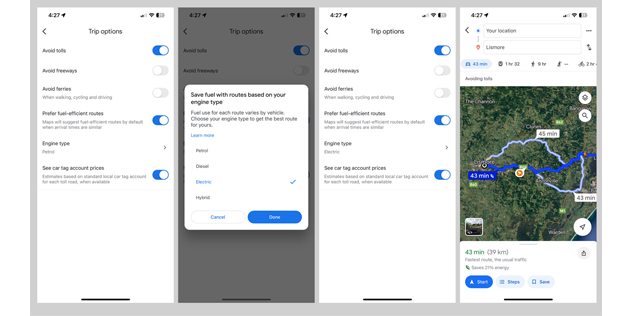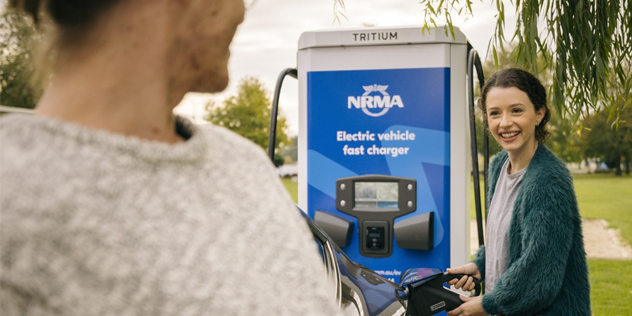How to save money when owning an EV

Whether you're a new EV owner (who may already be saving dollars by purchasing through a novated lease or by buying a secondhand EV) or a seasoned electric driver, there are several strategies to help you cut costs and make the most of your EV experience – and help close the gap on any extra outlay purchasing an EV.
How you charge at home
One of the most significant savings with EVs comes from how and when you charge your vehicle at home. Here are a few tips to optimise your charging routine:
- Switch your electricity plan: Many energy providers offer specific plans tailored for EV owners. For example, some plans allow free charging during certain hours, typically at night, when demand is low. Engie's Night Saver plan is one such option, offering free charging during off-peak times.
- Time-of-Use tariffs: Consider opting for a time-of-use tariff, where the cost of electricity varies throughout the day. This way, you can charge your EV when electricity is cheapest, often during off-peak hours. For example, Kia EV6 owner Greg charges during off-peak rates at his apartment block.
- Invest in solar panels: Although installing solar panels incurs a financial outlay, charging your EV off the power produced not only drastically reduces your charging costs but also delivers a quicker return on investment while reducing reliance on the grid. Polestar 2 owner Malcolm says his EV costs just $1.18 to drive 100km compared to his petrol-powered Volvo XC40 which used to cost $17/100km.
- Consider a home battery: If you live in NSW, the Peak Demand Reduction Scheme slashes up to $2400 off the cost of a new home or business battery installation from November 2024, and an additional $400 if that battery is connected to a Virtual Power Plant. A home battery can assist with reducing charging costs if you need to charge your EV outside of cheaper tariff plans.
To work out how fast the payback time on a solar or battery investment would be for you, you can use NRMA’s Electric vehicle fuel cost comparison calculator to see how much you’d save in fuel a year.
For example, if an average medium-sized SUV driven 15,000km a year costs $2500 in fuel, a $15,000 battery would take six years to pay for itself – and only five years if taking advantage of the Peak Demand Reduction Scheme.
—
How you charge on the road
While home charging is convenient, you might need to charge your EV on the road during long trips. Here's how to keep those costs down:
- Membership discounts: If you're a member of a motoring association like NRMA, you might be eligible for discounts at certain charging stations. For example, NRMA members can enjoy a 10% EV discount on charging at blue NRMA-owned chargers when using the MyNRMA app, and similar discounts apply with the Chargefox network when using the Chargefox app.
- Accommodation with charging facilities: When planning a road trip, look for accommodations that offer EV charging. Many hotels and motels now include this as an amenity, which can save you both time and money. Booking apps often have filters to help you find such places, and you can also seek out NRMA Parks and Resorts with complimentary EV charging. complimentary EV charging.
- Seek off-peak charging: Some EV charging networks offer cheaper rates during off-peak times. Plan your charging stops accordingly to take advantage of these lower rates. Other off-peak network discounts include:
- Chargefox: Find off-peak rates using the Chargefox app, by clicking on a location icon then tapping "Details”. These are typically available during specific hours, usually late at night to early morning, when electricity demand is lower.
- Evie Networks: Evie Networks offers variable pricing at certain charging stations. These rates encourage charging during off-peak periods by offering reduced prices compared to peak times.
- Jolt: Jolt offers free charging for the first 7 kWh at many of their chargers, which is equivalent to roughly 45-50 kilometres of driving. Beyond that, some locations may have off-peak rates or promotional pricing.
- Tesla Supercharger Network: Tesla sometimes adjusts pricing based on peak and off-peak times. While traditionally, Tesla Supercharger prices have been relatively consistent, some locations may offer variable pricing based on demand.
- BP Pulse: BP Pulse also offers variable pricing, although you must be at the location to see pricing via its app. Some variable pricing details are available on Plugshare but may be subject to change.
How and where you drive your EV
How you drive your EV can significantly impact your energy consumption and costs. Consider these tips for a more economical drive:
- Drive conservatively: Rapid acceleration and high speeds consume more energy. Try to accelerate gradually and maintain a steady speed.
- Route planning: Choose routes with minimal changes in elevation and fewer stops. This not only saves energy but can also reduce the wear and tear on your vehicle.
- Take energy-saving routes: Some navigation systems offer the option to choose routes that are more energy-efficient. These routes are designed to minimise energy consumption based on factors like terrain and traffic conditions. For example, to use Google maps to help you find a more economical route:
- Enter your destination
- Click the three dots in top left of screen
- Click options then choose your engine type
- View the energy saved at the bottom of the screen

By implementing these dollar-saving strategies, you can maximise the cost-saving benefits when driving and charging your EV.
Not only will you be doing your wallet a favour, but you'll also be contributing to a more sustainable future. So, charge smartly, drive efficiently, and enjoy the ride!







